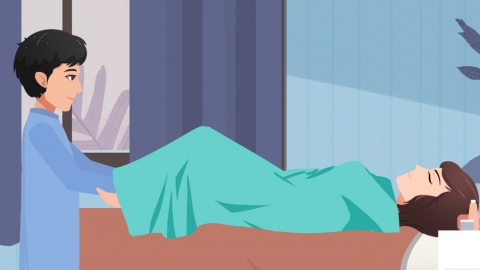How can uterine laxity be improved to become tighter?
Generally, uterine laxity may be caused by tissue stretching after pregnancy and childbirth, declining estrogen levels associated with aging, repeated intrauterine procedures damaging the myometrium, mild uterine prolapse, pelvic floor dysfunction, and other similar factors. It is recommended to seek timely medical consultation to determine the exact cause, followed by appropriate interventions under medical guidance, such as general treatments, medication, or surgical options. A detailed explanation is as follows:

1. Tissue stretching after pregnancy and childbirth: During pregnancy, the uterus continuously expands, and during delivery, the passage of the fetus stretches the uterine and pelvic connective tissues, reducing their elasticity and causing laxity. This is commonly seen in postpartum women. Performing Kegel exercises as early as within 6 months postpartum can be beneficial. Each session involves contracting the pelvic floor muscles for 3–5 seconds followed by relaxation, repeated 15–20 times per set, 3 sets daily.
2. Declining estrogen levels with aging: After age 40, ovarian function declines and estrogen secretion decreases, leading to collagen loss in the uterine muscle layer and surrounding tissues, gradually reducing elasticity and resulting in laxity. Estrogen replacement therapy, such as topical estriol cream, conjugated estrogen tablets, or estradiol valerate tablets, should be administered according to medical instructions.
3. Myometrial damage due to repeated intrauterine procedures: Repeated abortions, curettage, hysteroscopic surgeries, and similar procedures can damage the uterine muscle structure, causing myofiber rupture and reduced elasticity, leading to laxity. Avoid unnecessary intrauterine procedures and, postoperatively, follow medical advice to use medications such as Motherwort granules, Xinshenghua granules, or Baogong止血 granules to promote myometrial repair and reduce residual damage.
4. Mild uterine prolapse: Relaxation of the uterine supporting ligaments causes slight downward displacement of the uterus, accompanied by a feeling of looseness, representing a mild pathological condition. Under medical guidance, a pessary can be used to externally support and maintain the normal position of the uterus.
5. Pelvic floor dysfunction: Weak and lax pelvic floor muscles fail to adequately support the uterus, causing uterine laxity, which may be accompanied by urinary leakage. In addition to consistent Kegel exercises, severe cases may require vaginal pelvic floor reconstruction surgery to repair damaged pelvic structures and restore uterine support.
Daily habits should avoid chronic constipation, heavy lifting, and other activities that increase abdominal pressure to reduce the risk of further uterine laxity. Maintain a regular sleep schedule and engage appropriately in mild physical activities like walking and yoga to enhance overall physical health and aid in improving uterine laxity.





